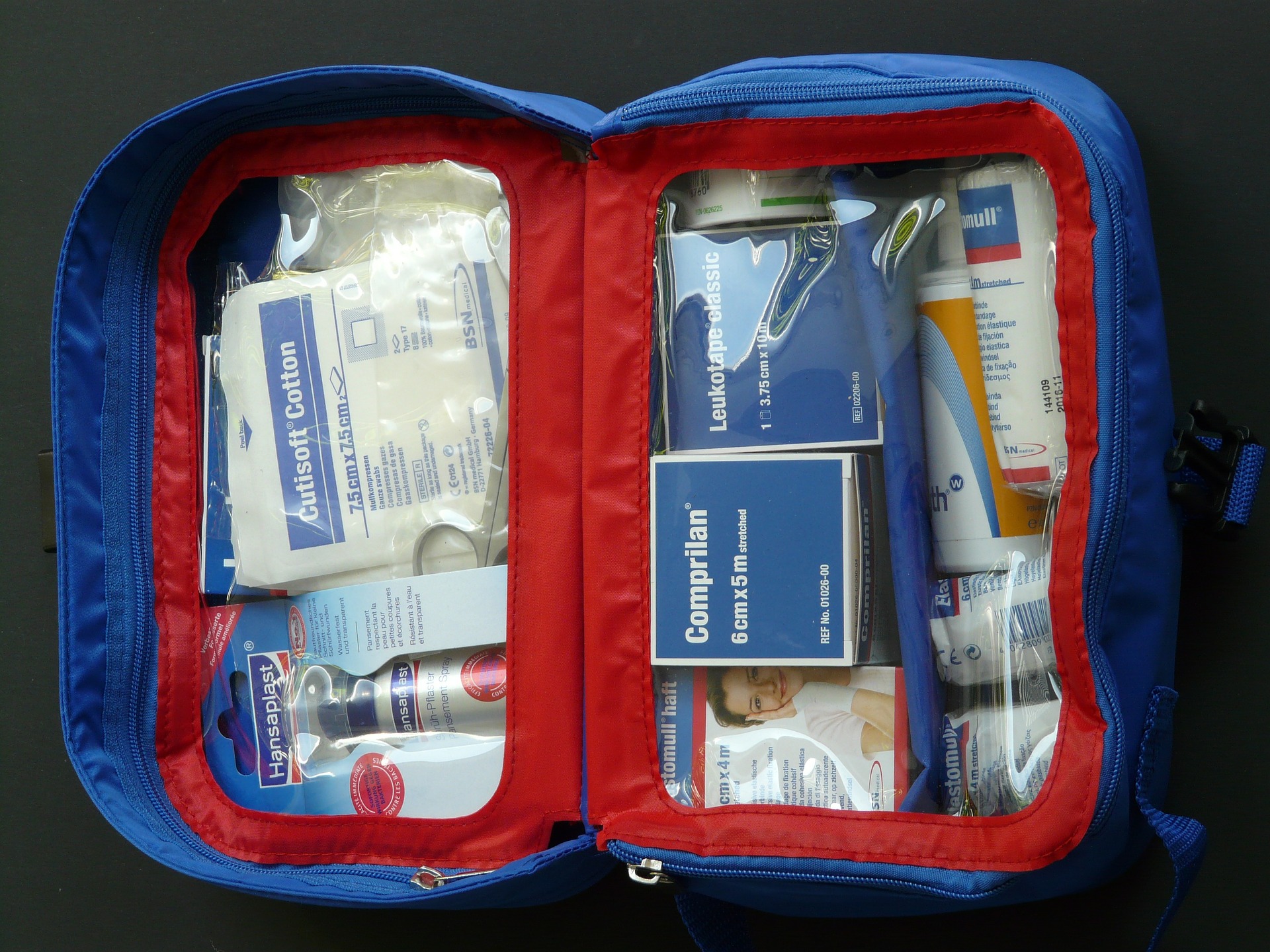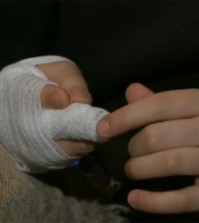- Study Says Most Parents Don’t Use Car Seats In Ride Share Vehicles Like Uber
- This 12-Year-Old Boy Is A Sophomore Aerospace Engineering Major!
- Fire Safety Experts Warn Of Hand Sanitizer Danger After A Mom and Kids Escape House Fire
- Recall Alert: Peaches May Be The Cause Of Salmonella Outbreak, 68 People Ill
- Summer Vacation In The Days Of COVID: Tips To Stay Safe
- How To Safely Grocery Shop During The Coronavirus Pandemic
- Michigan Teen With Vape-Related Illness Undergoes Double Lung Transplant
- Teen Kicks Off Anti-Vaping Campaign From Hospital Bed
- Teenager Receives Life Sentence For Strangling Sister To Death Over A Wi-Fi Password
- Toddler Falls To Death From 11th Deck of Cruise Ship
First Aid Kit for Children: A Guide To The Bare Essentials


What Should You Keep In Your First Aid Kit?
If you have children or are a childcare worker, then you know that sometimes accidents happen. Children can fall and hurt themselves while playing or if unsupervised. However, it’s how you respond to these accidents that makes all of the difference in the world. And a huge part of quick response is having the proper first aid equipment on hand. It’s also important that you know how to use them. Let’s discuss these items as well as how you can go about protecting your child in the event of an emergency.
Tweezers
Tweezers are an essential part of any first aid kit for children. It’s very easy for kids to pick up splinters, shards of glass or even tics if they are not careful. Tweezers should only be used in well lit rooms and the child should be instructed to remain calm and still while you are using the tool. The goal is to remove all foreign debris and then treat the affected area with rubbing alcohol or peroxide to prevent infection.
Sharp Scissors
The best kits contain sharp scissors. Scissors make it easier for you to cut the bandage when it’s time to wrap the wound. It’s important that scissors are placed back into the kit immediately after use so that the child can avoid any further accidents.
Calibrated Spoon
You should also have a calibrated spoon, cup or oral syringe. These tools help you to measure liquid medicine. They are essential to ensuring that the child receives the proper dosage. Never give more than is recommended by the doctor or instructions.
Ice Pack
Finally, one of the most important tools is the ice pack. This may be in the form of frozen food packages or gel packs that you purchase from the store. This is great for times in which the child seems to have sprained a limb or has bruises. Make sure that they elevate the limb while using the ice pack.
Gauze
No first aid kit is complete without gauze. Gauze are used for dressing the wounds. You should always make sure that you 1 to 2 inch rolls and pads on hand. You should also ensure that you have adhesive tape to hold the gauze in place. When wrapping the gauze, remember not to wrap them too tight as this could cut off circulation and prolong the healing process.
Cotton Balls
Your kit should have sterile cotton balls. These are great for cleaning small bruises and cuts. They are also pretty helpful when it comes to cleaning the outside of the child’s nose and ears. However, you should avoid inserting the swab directly into the child’s nose. This causes foreign matter to be pushed back into the sinus cavity and could lead to infection.
Nasal Bulb Syringes
In cases where the child has managed to place a foreign object in their or has a bad cold and is unable to breathe, it helps to have something to remove the matter or object. Nasal bulb syringes are excellent because they provide just the right amount of suction. Never stick an object in the child’s nose or throat unless the piece of equipment was specifically designed for this.
High-Beam Flashlight
Depending on your location, the lighting may not always be perfect. This is the case in which you may need a little assistance. Small high-beam flashlights are great for checking a child’s throat and checking their hands for splinters or other foreign matter.
Bandage Strips
Another important piece of first aid equipment is adhesive bandage strips. You should keep various shapes and sizes on hand. Though it’s recommended that you avoid putting the strip on either part of the child’s body that may come into contact with his/her mouth–this presents a choking hazard.
First Aid Equipment In Educational Facilities
Though we have just addressed the most basic household first aid equipment, it’s also worth noting that teachers and facility staff must take extra care in preparing their kits. For instance, they must have gloves on hand in case they need to deal with blood. They should invest in fire blankets in case the child has an incident with fire.
Taking care of children can be an extremely rewarding job. However, it also requires that you be prepared for anything. This is especially the case when it comes to accidents and injuries. If you invest in the proper equipment, then you should be able to respond quickly and ensure that the child remains happy and healthy.








0 comments